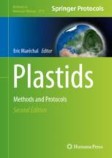Search
Search Results
-
Zeocin treatment significantly elevated transformation efficiency of Nannochloropsis oceanica
Genetic transformation is critical to microalgal genetic engineering which generally prefers a high transformation efficiency. Here, we describe a...

-
Novel WYL domain-containing transcriptional activator acts in response to genotoxic stress in rapidly growing mycobacteria
The WYL domain is a nucleotide-sensing module that controls the activity of transcription factors involved in the regulation of DNA damage response...

-
Development of genetic markers in Yarrowia lipolytica
AbstractThe oleaginous yeast Yarrowia lipolytica represents a potential microbial cell factory for the recombinant production of various valuable...

-
Establishment of protoplast preparation protocol and genetic transformation system for Sclerotiophoma versabilis
Going into deep study about the molecular mechanism of pathogenesis in Sclerotiophoma versabilis required high-efficiency transformation system. S....

-
Biosynthesis of a Novel Ganoderic Acid in Saccharomyces cerevisiae and Research of its Antitumor Activity
AbstractGanoderic acids (GAs), mainly from the traditional Chinese medicinal Ganoderma lucidum , possess antitumor, anti-metastasis and other...

-
Diversity in mitotic DNA repair efficiencies between commercial inbred maize lines and native Central American purple landraces
BackgroundHomologous recombination allows plants to repair double strand breaks in DNA, which if unrepaired may lead to cell death. In this project,...

-
A facile Agrobacterium-mediated transformation method for the model unicellular green algae Chlamydomonas reinhardtii
A reliable and simple Agrobacterium -mediated transformation system for the unicellular green algae model organism Chlamydomonas reinhardtii has been...

-
DNA susceptibility of Saccharomyces cerevisiae to Zeocin depends on the growth phase
The aim of this study was to evaluate the level of Zeocin-induced double-strand breaks (DSBs) in Saccharomyces cerevisiae cells in a different growth...

-
Omics analyses of Rehmannia glutinosa dedifferentiated and cambial meristematic cells reveal mechanisms of catalpol and indole alkaloid biosynthesis
BackgroundRehmannia glutinosa is a rich source of terpenoids with a high medicinal reputation. The present study compared dedifferentiated cells...

-
Optimization of Physical Parameters for the Enhanced Expression of Recombinant Chemokine Receptors D6 and DARC in Pichia pastoris
AbstractD6 and DARC proteins had been reported as decoy chemokine receptors in cancer study. In this study, electrotransformation of Pichia pastoris ...

-
Targeted Gene Editing of Nuclear-Encoded Plastid Proteins in Phaeodactylum tricornutum via CRISPR/Cas9
Genome modifications in microalgae have emerged as a crucial and indispensable tool for research in fundamental and applied biology. In particular,...
-
Identification of a novel promoter for driving antibiotic-resistant genes to reduce the metabolic burden during protein expression and effectively select multiple integrations in Pichia Pastoris
Routine approaches for the efficient expression of heterogenous proteins in Pichia pastoris include using the strong methanol-regulated alcohol...

-
Characterization of Prolyl-4-Hydroxylase Substrate Specificity Using Pichia pastoris as an Efficient Eukaryotic Expression System
The use of eukaryotic expression systems facilitates the heterologous expression of complex eukaryotic proteins in their post-translationally...
-
Organoids Models of Pancreatic Duct Adenocarcinoma
Three-dimensional (3D) organoid culture is a laboratory technique used to grow and study miniature organs that mimic the structure and function of...
-
Assessing Interleukin-1β Activation During Pyroptosis
The cytokine interleukin-1β (IL-1β) is a major mediator of inflammation in autoinflammatory disease and the host response to infection. IL-1β is...
-
Development of Organoids to Study Infectious Host Interactions
Emerging organoid research is paving way for studies in infectious diseases. Described here is a technique for the generation of stem-cell derived...
-
Determining the Subcellular Localization of Proteins in the Different Membranes of Diatom Secondary Plastid
Diatoms such as Phaeodactylum tricornutum arose through a process termed secondary endosymbiosis, in which red alga–derived plastids are surrounded...
-
Tandem gene duplication selected by activation of horizontally transferred gene in bacteria
AbstractHorizontal gene transfer occurs frequently in bacteria, but the mechanism driving activation and optimization of the expression of...

-
Mini-Bioreactor Platform for Membrane Protein Production in Komagataella pastoris
Membrane proteins (MPs) play vital roles across various cellular functions, biological processes, physiological signaling pathways, and human-related...
-
Transmembrane nuclease NUMEN/ENDOD1 regulates DNA repair pathway choice at the nuclear periphery
Proper repair of DNA damage lesions is essential to maintaining genome integrity and preventing the development of human diseases, including cancer....

